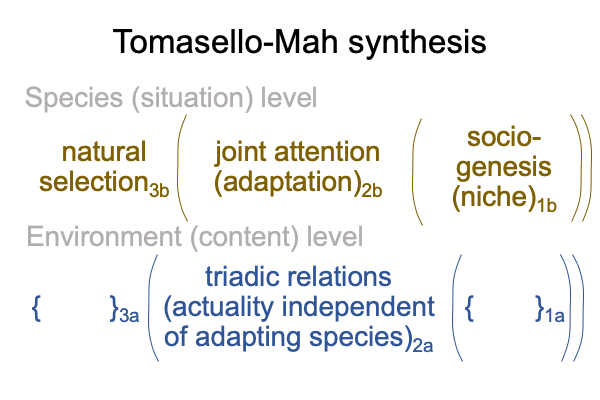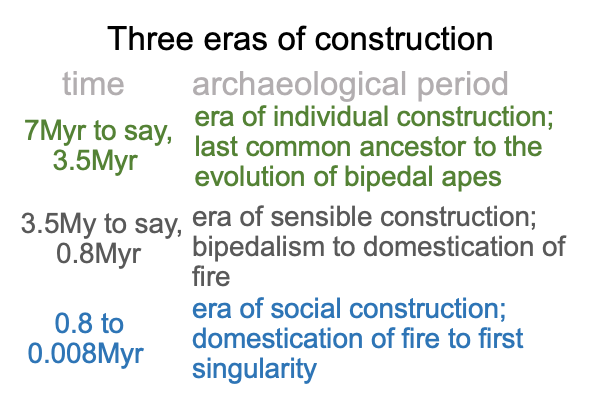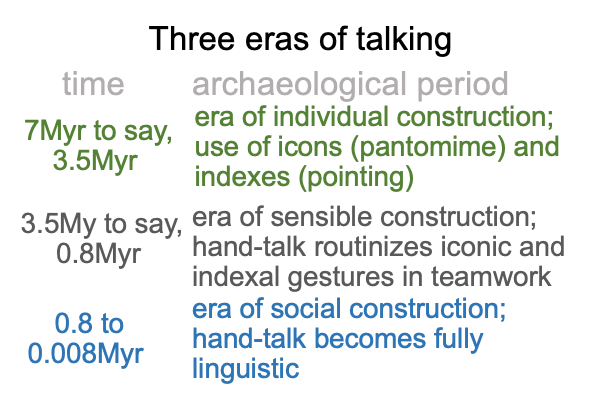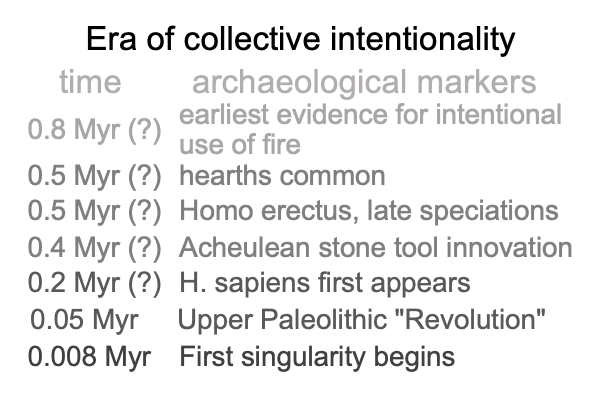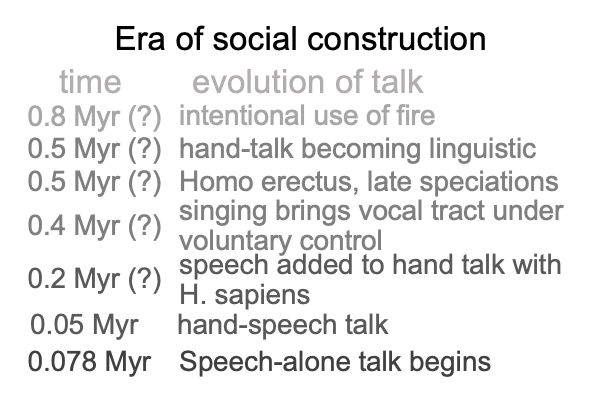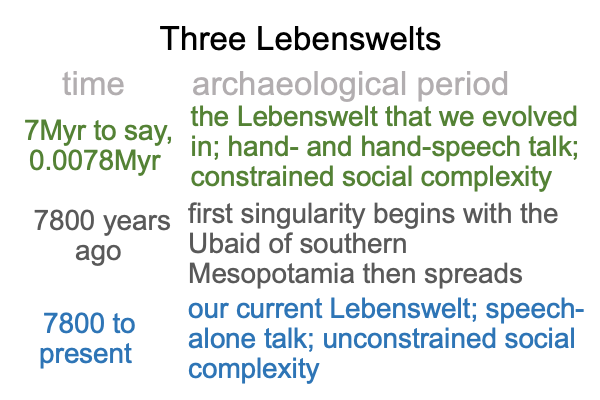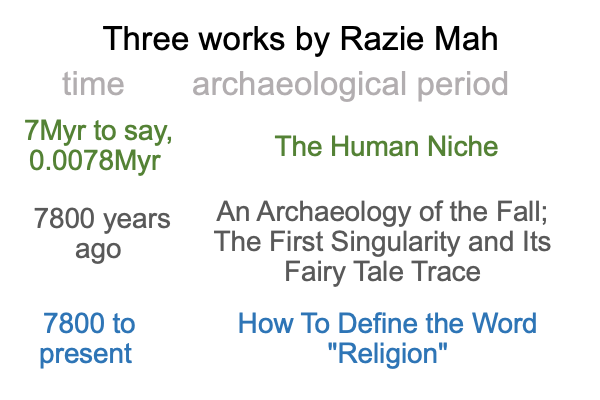Looking at Michael Tomasello’s Book (2016) “A Natural History of Human Morality” (Part 21 of 22)
0578 What about other research into how human morality came to be?
Tomasello sorts current theories into three baskets: evolutionary ethics, moral psychology and gene-culture evolution.
In order to appreciate Tomasello’s view on the contents in each basket, I present (once again), his vision. The perspective level associates to phenotype. The content level goes with adaptation. The intersections previously diagrammed are alternate portrayals of situation-level interdependence2b.
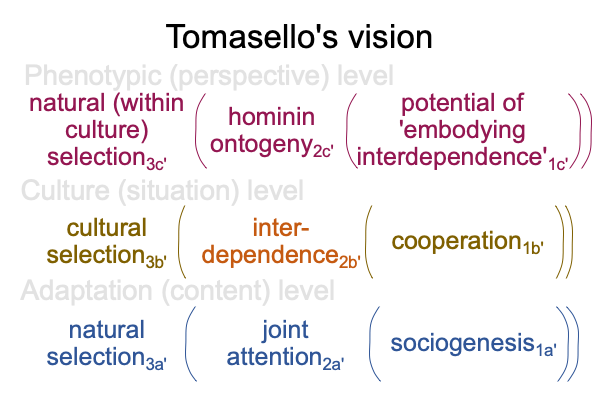
0579 Evolutionary ethics focuses on reciprocity.
The idea of reciprocity applies, yet seems insufficient, to an explanation of interdependence2b. In Tomasello’s vision, interdependence2b emerges from (and situates) cooperation1b, in the normal context of cultural selection3b. Cooperation1b emerges from joint attention2a, in the same way that a situation emerges from content. Joint attention2aemerges from (and situates) sociogenesis1a in the normal context of natural selection3a.
Reciprocity pertains to the ways that cooperation1b virtually situates sociogenesis1a. But, reciprocity cannot account for joint attention2a, which directly situates sociogenesis1a.
0580 Moral psychology investigates prosocial behaviors. Unfortunately, the field has not drawn connections to human evolution. Tomasello’s vision pencils in many connections.
Indeed, Tomasello’s vision takes moral psychology into vistas beyond the term, “prosocial behaviors”.
For example, here is the virtual nested form in the category of firstness.
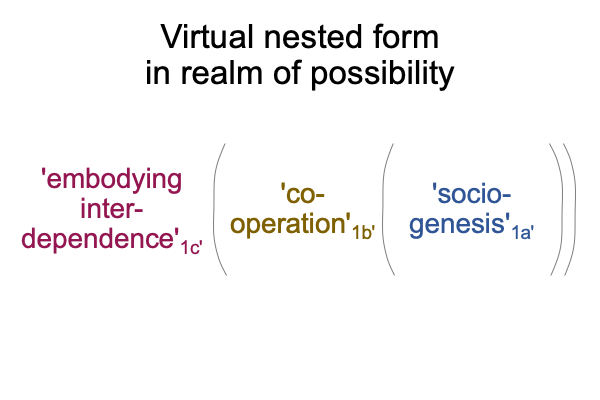
Surely, prosocial attitudes are foundational to each of these potentials. Plus, each of these potentials keys into attitude-associated behaviors.
0581 Here is the virtual nested form in the category of secondness.
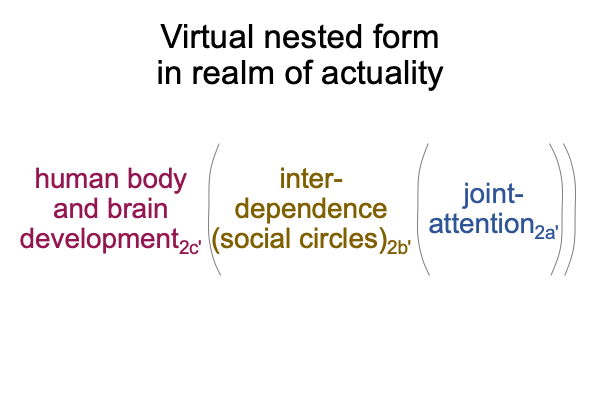
Ah, moral psychology models prosocial behaviors that potentiate the phenomena of these noumena.
0582 Here is the virtual nested form in the category of thirdness.
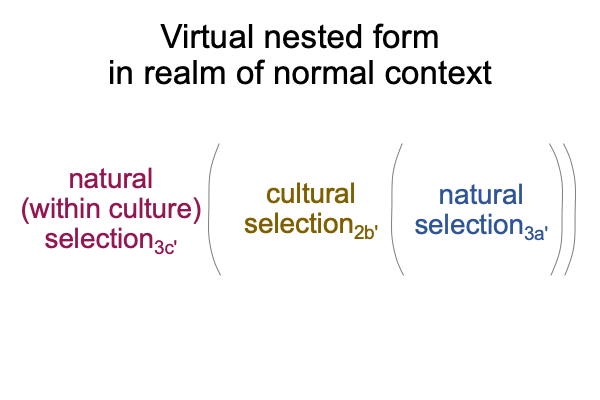
Oh, moral psychology has nothing to say about these three topics.
0583 What does this imply?
Moral psychology is a discipline that investigates the phenomena of actualities2 that occur within the normal context of three styles of natural selection.
On the phenotypic (perspective) level, natural (within culture) selection3c is similar to selective breeding, in which each long-lived successful tradition breeds for individuals who are more and more capable of maintaining its survival.
On the cultural (situation) level, each manifestation within a particular social circle competes3b with other manifestations. For example, one teams competes with other teams in terms of productivity2H and having fun2V.
On the adaptation (content) level, natural selection3a brings an adaptation2a into relation with a niche1a. Tomasello labels the adaptation2a, “joint attention2a“, and its niche1a, “sociogenesis1a“.
0584 The problem?
A niche is the potential of an actuality independent of the adapting species.
The actuality independent of the content-level adaptive species does not appear in Tomasello’s vision.
Tomasello’s vision is like a house.
The actuality independent of the adaptive species is like a ghost in the basement.
The union of house and basement is called the Tomasello-Mah synthesis.
0585 Gene-culture co-evolution connects the scientific disciplines of genetics and natural history, not as an intersection (as Razie Mah does), but as a three-level interscope (as Tomasello does).
The following interscope, characterizing gene-culture co-evolution, appears in Looking at Lesley Newson and Peter Richerson’s Book (2021) “The Story of Us”. This examination may be found in Razie Mah’s blog, from July 10 to July 31, 2023.
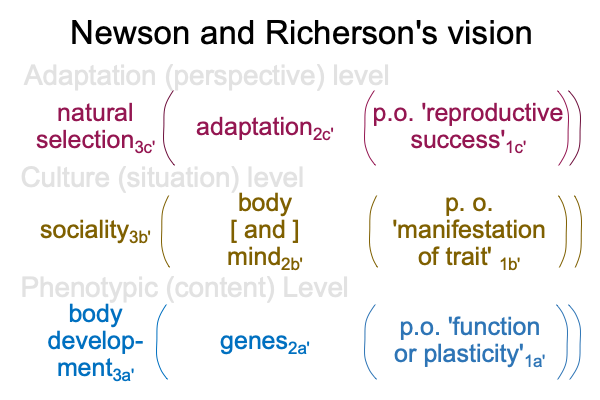
586 Note how the interscope for gene-culture evolution elevates adaptation over phenotype, in the opposite of the way that the interscope for Tomasello’s vision elevates phenotype over adaptation.
0587 Overall, do any of these three baskets contain Tomasello’s vision?
No, just the opposite, Tomasello’s vision contains the baskets of evolutionary ethics, moral psychology and gene-culture evolution, plus more.
The arc of Tomasello’s inquiry into the origins of humans is notable in this regard.
The house of Tomasello’s vision is an architectural achievement.
Yet, there is that ghost in the basement.
To that ghost, I now turn.

